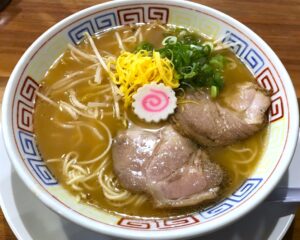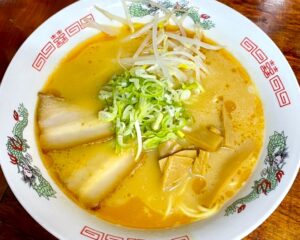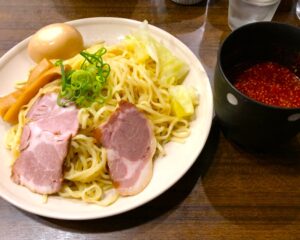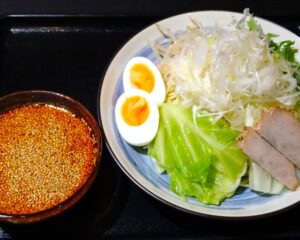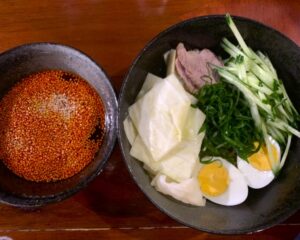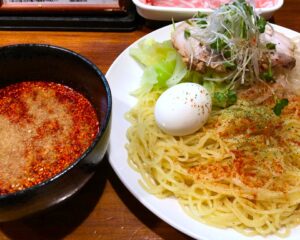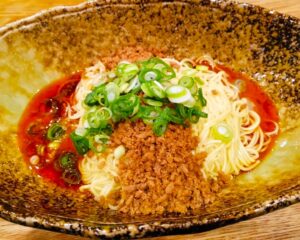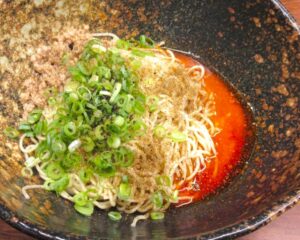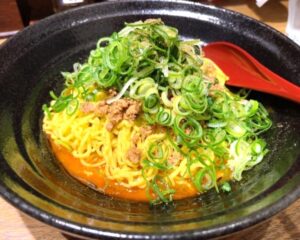Hiroshima Ramen (Hiroshima Pref.)
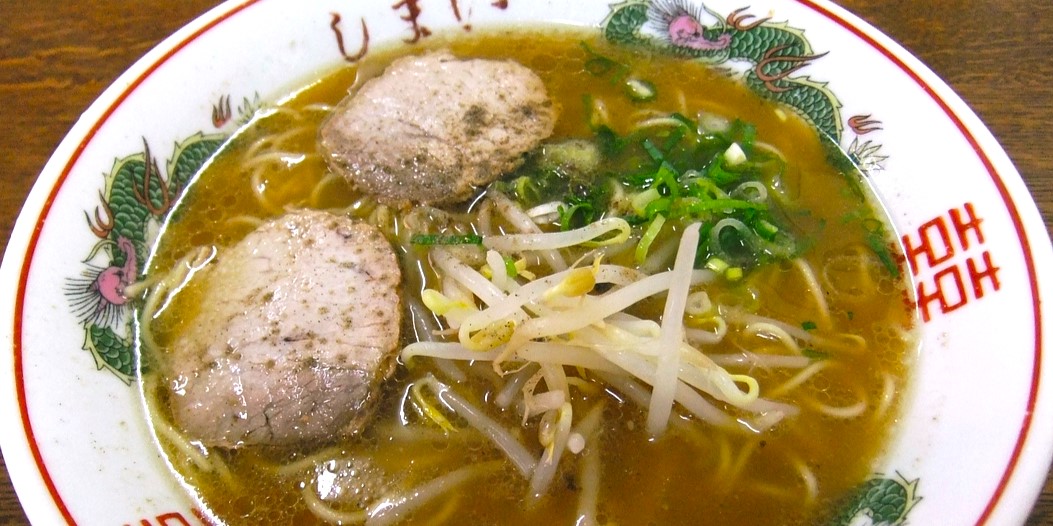
What is Hiroshima Ramen(広島ラーメン)?
Hiroshima ramen is a soy sauce tonkotsu-flavored ramen that originated from street food stalls in the western part of Hiroshima Prefecture, centering on Hiroshima City, after the war. Called “Chuka Soba(=中華そば; Chinese noodles),” the Onomichi ramen in eastern Hiroshima has a clear back fat soy sauce ramen with chicken bones and small fish stock, but the light soy sauce pork bone flavor is completely different. It is often said that the taste is somewhere between Kanto(Tokyo erea) and Kyushu.
Most of the noodles are thin or medium-thin, and are soft.
The soup is a soy sauce pork bone soup that combines cloudy tonkotsu(pork bone stock) with a complex seafood stock.
The ingredients include chashu pork, green onion, and bean sprouts (thin bean sprouts), and it has a nostalgic taste that is easily accepted by everyone. In addition to fried rice and gyoza, there are quite a few shops that have oden(fishcake and vegetable stew) as a side menu.
Other types of noodles, such as tsukemen (激辛冷麺; super spicy cold noodles) and soupless dandan noodles(汁なし担担麺), have also been around for a long time.
Thin noodles with a history, pork bone soy sauce
The city in Hiroshima that is famous for ramen is Onomichi. However, Hiroshima City, the prefectural capital, is not far behind. There are many ramen shops competing with each other to rival, or even surpass, Onomichi as a ramen city.
The “Hiroshima Ramen” is a pork bone soy sauce ramen with “Suzume(すずめ)” and “Yōki(陽気)” as its representatives. Nowadays, when many people hear the word “tonkotsu soy sauce,” they probably think of Yokohama Iekei ancestry. However, this hiroshima ramen’s history is surprisingly long. And the noodles are thin.
“Suzume” is the most popular and well-known. The shop opens at 3pm. The event ends at 9 p.m. as it is sold out. Business hours are short at 6 hours. The only menu items are Chinese noodles and beer, and the first thing you need to do when you enter the shop is take a numbered ticket. Even if you don’t order, there is no menu, so your Chinese noodles will be served one by one. Take a numbered ticket to maintain that order. What a unique yet easy to understand system. The shop opens at 3 p.m., which means the soup that they started making at 8:30 a.m. is ready. The light brown soup is made by boiling pork bones and vegetables into a cloudy white soup with a soy sauce sauce, and the toppings are bean sprouts, green onions, and five small slices of chashu pork. It is characterized by its simplicity.
The popular “Yōki(陽気)” has the same style, but it is not a numbered ticket. When you enter the shop, you will be asked if you want one bowl or two. As expected, the business opens late, at 4:30 p.m.
Hiroshima ramen was created by Minoru Oki(沖稔) and popularized by his relatives.
Seiji(誠治), the second son, had run Shimai (しまい, founded around 1957), Mr.Oki’s wife Shigeno’s niece, Tatsuko Sekigami (Oki), had run Suzume (寿々女) (1958), and Tatsuko’s older sister, Masae Tsuruta had run “Yōki(陽気)” (1957), each opened from a food stall. In addition, the sister of Hideko, the proprietress of Shimai, moved Shimai to another location, and with the move, it became Otomaru (乙丸,1987).
“Shimai(しまい)”, “Yōki(陽気)”, Suzume(寿々女/すずめ), and “Otomaru(乙丸)” have inherited Minoru Oki’s taste and added their own unique tastes to them. Many shops have been created based on these flavors. That is Hiroshima ramen.
However, not all ramen was created from this flow. “Rairaitei(来頼亭)” was founded in 1948, so it was around the same time that Minoru Oki started it. The ramen here is rich, but has little odor and has a mellow taste. Five kinds of ingredients are simmered in a pork bone base, and the rich pork bone soup makes it melty. What’s unique about this ramen is that it has a Kinshi Tamago(錦糸玉子; thin omelette strips) on top, which is unusual for hot soup ramen.
“Shanghai Sohonten(上海総本店)” was founded in 1953 under the name “Shanghai(上海)”. This is different from “Shanghai,” which was started by Minoru Oki. For some reason, there seem to be many shops in Hiroshima with the name “Shanghai,” so around 1980 the name was changed to “Shanghai Sohonten.” Unlike the Hiroshima ramen mentioned above, this ramen uses pork bones, which you can smell strongly if you go near the shop, but the soy sauce ramen is not a cloudy soup. They use the same soup that has been used since their founding.
Perhaps due to the influence of “Suzume(= sparrow)” in Hiroshima, there are many shops named after birds, and the flavors are often similar. “Tsubame(つばめ; = swallow)” is close to “Suzume,” and it’s also a similar flavor (with a slightly stronger soy sauce sauce), which makes me laugh. There are also “Hiyoko(ひよこ; = chick” “Uguisu(うぐいす; =warbler)”, and “Chabo(チャボ; = bantam)”. It is also said to be of the Hiroshima Kotori-kei(小鳥系; small bird type).
Fuji☆Moto(ふじ☆もと) shop and it’s lineages, where customers can choose from a variety of seafood soup stock, have also become popular in recent years and have long lines.
Ramen-Japan / Examples of Ramen Shops
Examples of the long-established shops that are the originator of Hiroshima ramen
-
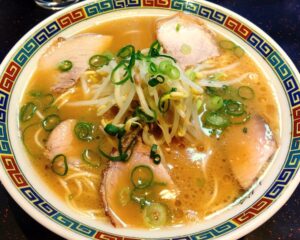
-
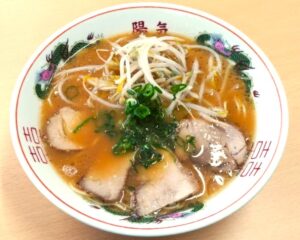
Yōki Enami Main Shop(陽気 江波本店) *Original lineage, classic Hiroshima ramen
-

-
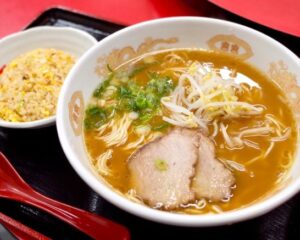
-
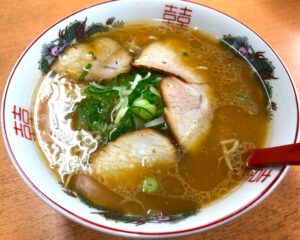
-
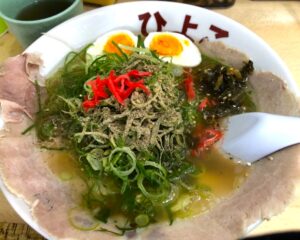
-
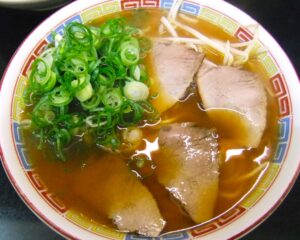
-

Ramen Chabo(ラーメン チャボ) *School desk chair/light pork bone soy sauce
-
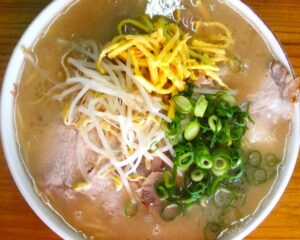
Rairaitei(来頼亭) *A long-established “Kotteri type” shop in Hiroshima (founded in 1948)
-
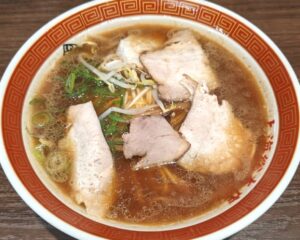
-

Chuka Soba Kikuma(中華そば きくま) *Enami Yōki’s lineage/on Michelin Bib Gourmand
-
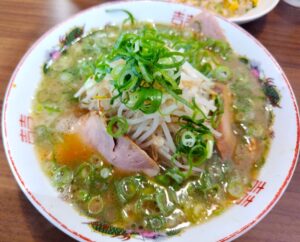
Examples of the new type of ramen shops in Hiroshima
-
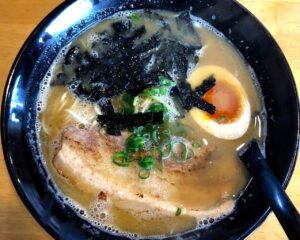
Hiroshima Ramen Hiranoya(広島らーめん 平の家) *Fish Tonkotsu Ramen/Curry Ramen
-
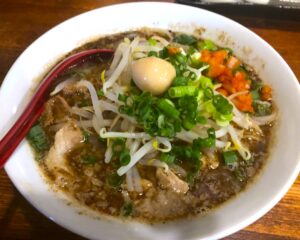
-
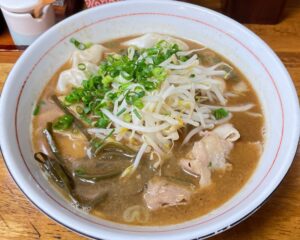
Shin Hiroshima Ramen Miki(新広島 らーめん 味喜) *Fuji☆Moto type Seafood soup stock to choose from
-
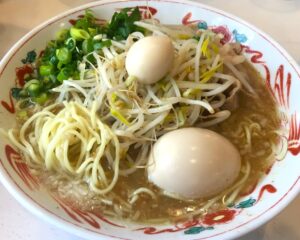
Ramen Morikawa(らーめんもりかわ) *A fusion of seafood from Fuji☆Moto and hearty portions from Jiro-inspired
-
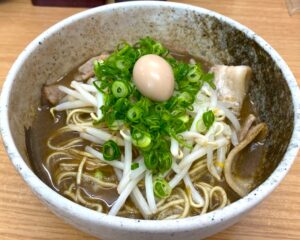
Ramen Matsu☆Ura(らーめん まつ☆うら) *9 types of soup stock/The owner is a YouTuber
-

Yoichi(与壱) *Dark pork bone soy sauce and lemon ramen, lots of colored paper
What is Hiroshima Tsukemen/Super Spicy Cold Noodles?
Other noodle dishes are also popular in Hiroshima. Noodles are consumed a lot, such as Hiroshima udon(広島うどん), and by adding yakisoba (焼きそば fried noodles) into okonomiyaki(お好み焼き). Tsukemen(つけ麺; dipping noodles) and soupless dandanmen(汁なし担担麺), which are relatives of ramen, will be described below.
It is said to have originated in the Chinese shop “Shinkaen(新華園),” which opened in 1954 in Hatchobori, Naka Ward, Hiroshima City (currently relocated to Kawaramachi, Naka Ward). Rather than calling it tsukemen, it is called “cold noodles(冷麺),” and it is served with a very spicy dipping sauce made by adding chili pepper or chili oil to a soy sauce-based dipping sauce. The Kawaramachi main shop has strict rules for beginners, such as no photography allowed, so it would be rude if you didn’t understand them before going. (*There are several branches.)
A person who trained at this shop founded “Reimenya(冷めん屋)” in 1985 as a specialty shop where you can eat there all year round, and it became popular, and now there are many specialty shops. Toppings include boiled cabbage, cucumbers, green onions, and boiled eggs. Shops that offer regular tsukemen that are not spicy are also popular.
Examples of shops that serve Hiroshima Tsukemen
-
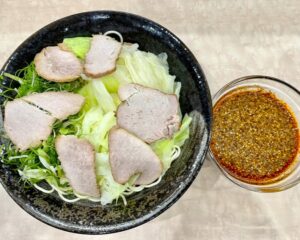
Shinkaen Misasa Shop(新華園 三篠店) *Directly lineage shop. Cold noodles only. Photos allowed.
-
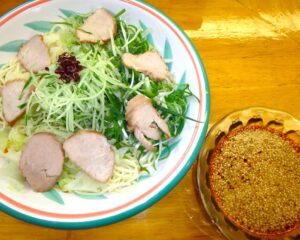
Reimenya(冷めん家) *Relaxed and clean, take-out and local shipping available
-
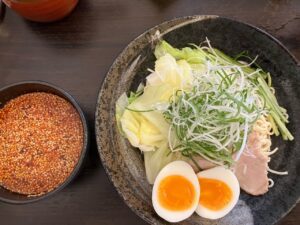
Hiroshima Tsukemen Honpo Bakudanya Honten(ばくだん屋本店) *Cold noodles and straight noodles. 10 spicy.
-
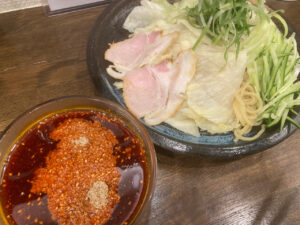
-
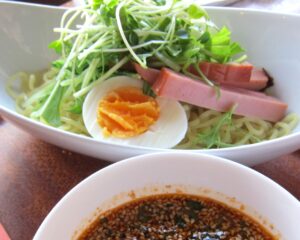
Cafe Lente *While looking at the Otorii gate in Miyajima (Itsukushima)
-
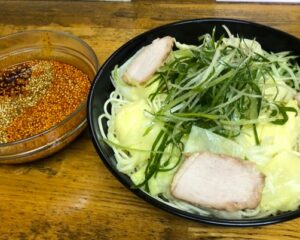
Wakabatei(わかば亭) * Numbing spiciness and umami flavor, available from 0 to 100 times spicier
-
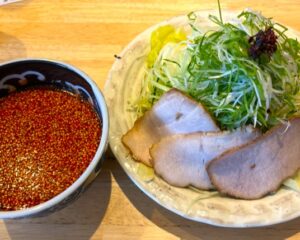
Bakajin(麦家人) *It is operated by a noodle shop next to a noodle shop.
-
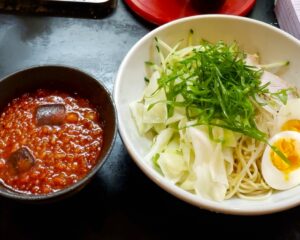
-
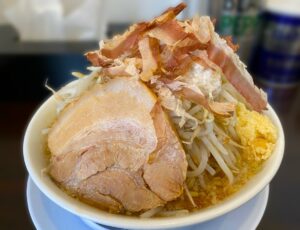
Mensho Yamatora(麺匠 やま虎) *Jiro style hearty arrangement + Hiroshima spicy sauce
Examples of popular shops serving non-spicy tsukemen in Hiroshima
-
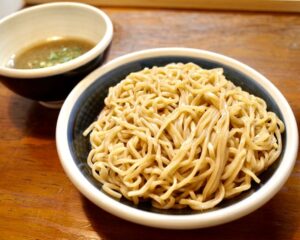
Tsukesoba Shuichi(つけそば 周一) *Homemade whole grain and sour rich soup
-
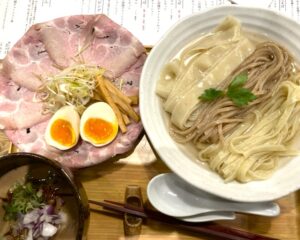
-
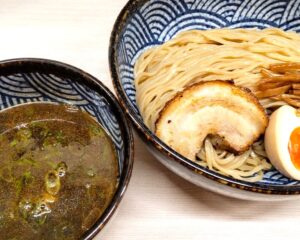
Hiroshima Ramen Kokonoe Shoten(廣島らぁ麺 九重商店) *Homemade noodles, seafood and soy sauce
Hiroshima soupless dandan noodles
The soupless dandan noodles (汁なし担担麺/担々麺) are an adaptation of the authentic Sichuan soupless noodles in China, and are now eaten all over Japan. The person who brought it to Japan is said to be Koichi Hattori(服部幸一) of the ramen shop Kisaku(きさく), which was founded in 1999. When he attended a cooking class where a Chinese student taught how to make soupless dandan noodles, he was so impressed by the deliciousness of the soupless dandan noodles that he traveled to China to taste and research the authentic dandan noodles from Sichuan Province. The service began in 2001 as a way to help ramen shop recover from slumping sales. It became popular, and eventually Mr. Tsukasa Matsuzaki(松崎司), who paid homage to “Kisaku”, began offering soupless tandan noodles using his original recipe at “Kunimatsu(くにまつ)” (founded in 2009). Dandan noodles without soup became popular in Hiroshima’s business district because they were less spicy than super spicy tsukemen, easier to eat (less splashy), and cheaper. After that, Tsukasa Matsuzaki published the recipe, and more and more shops started making soupless dandan noodles, which became a boom around 2010.
Furthermore, dandan noodles in Japan can be roughly divided into the following types.
① “Chen Kenmin Style(陳建民式)” Created in 1950 by Mr. Chen Kenmin(陳建民式), a famous chef from Sichuan Province, China.
Dandanmen (with soup) came to Japan in the 1970s and was developed as soup noodles for Japanese customers.
② “Tokyo Style(東京式)” Arrangements such as adding the flavor of sesame paste and dried shrimp. (without soup)
③ “Chengdu style(成都式)” Authentic style made at Chinese restaurants and specialty shops. (without soup)
④ “Hiroshima style(広島式)” A unique development developed in Hiroshima. (without soup)
Hiroshima soup-less dandan noodles as a whole are characterized by having two main sauces: chili oil and Chinese pepper (花椒), and tend to use thin or medium-thin noodles with a slightly lower water content(low-hydrated noodles). “Kisaku” is unique in that it does not use sesame seeds and uses a soup that is rich in seafood. Other shops use sesame sauce, and the taste, ingredients, and arrangement vary greatly depending on the shop. What they have in common is that they place emphasis on the tingly, numbing spiciness, or what Chinese cuisine calls “ma(麻)”.
Examples of a shops that serve Hiroshima soupless dandan noodles
-
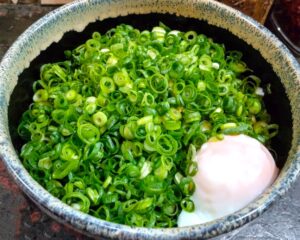
-
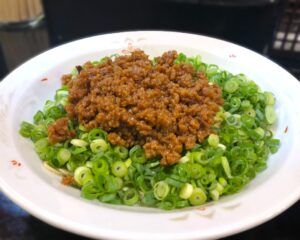
-
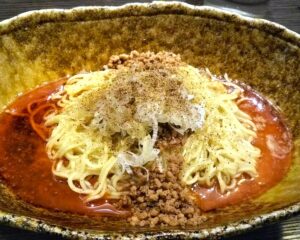
-
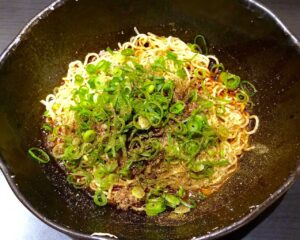
-
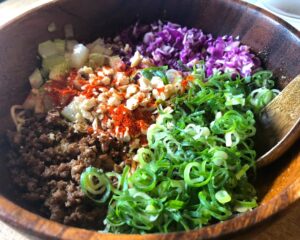
Harukiyo Herbal Soupless Dandan Noodles(薬膳汁なし担担麺 ハルキヨ) *Colorful Dandan noodles
-
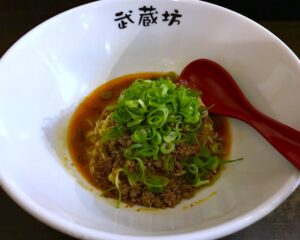
-
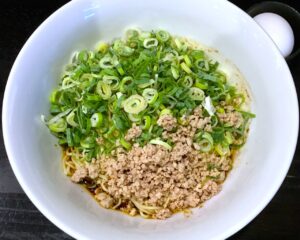
Akamen Bontenmaru Itsukaichi Main Shop(赤麺 梵天丸五日市本店 ) * Lots of spicy shrimp oil and Japanese pepper
-
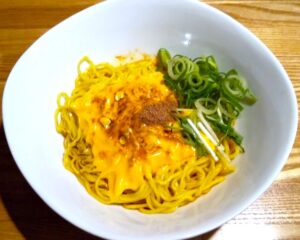
-
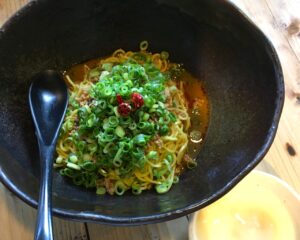
Raku(楽) *Popular shop near the Atomic Bomb Dome/Yakitori Izakaya at night

